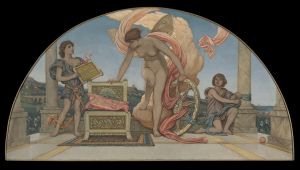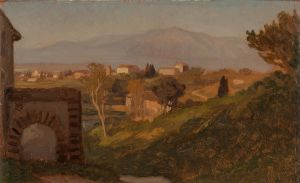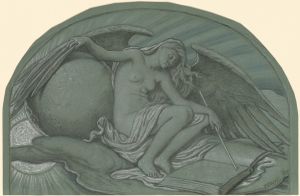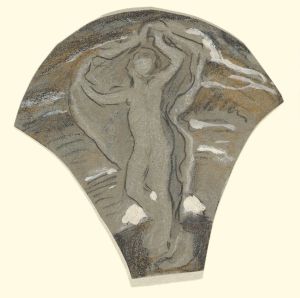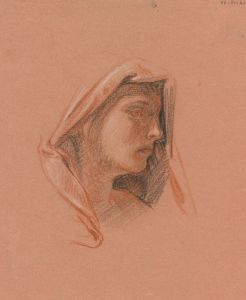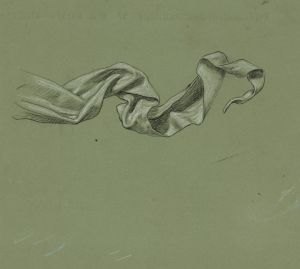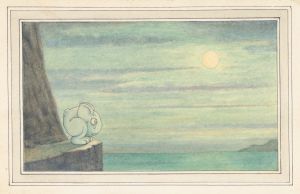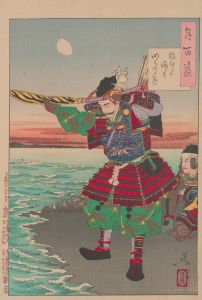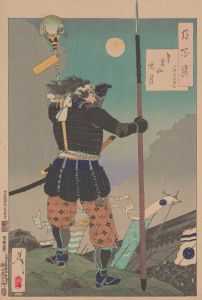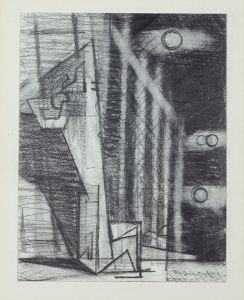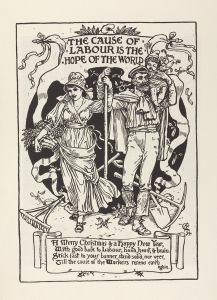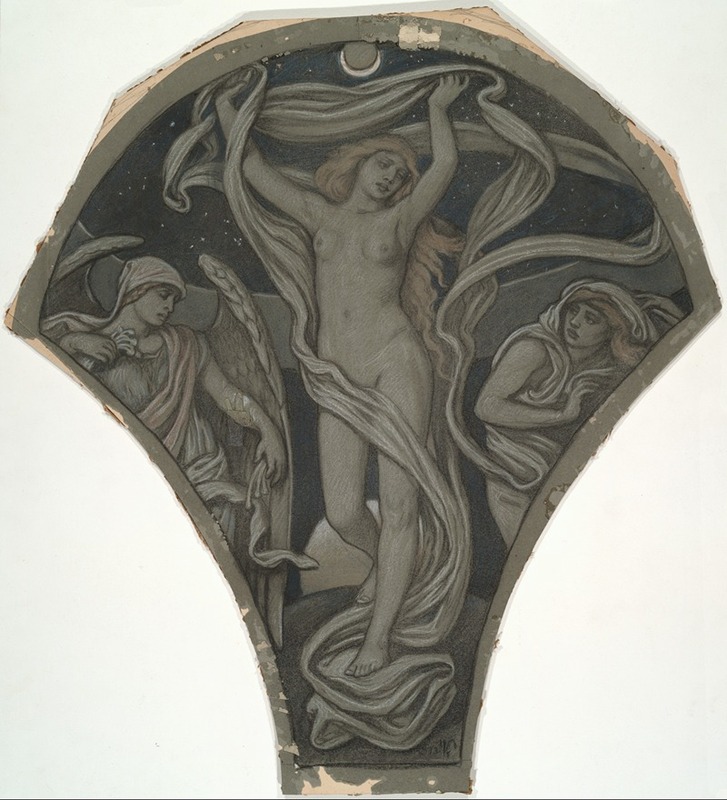
Cartoon for Luna
A hand-painted replica of Elihu Vedder’s masterpiece Cartoon for Luna, meticulously crafted by professional artists to capture the true essence of the original. Each piece is created with museum-quality canvas and rare mineral pigments, carefully painted by experienced artists with delicate brushstrokes and rich, layered colors to perfectly recreate the texture of the original artwork. Unlike machine-printed reproductions, this hand-painted version brings the painting to life, infused with the artist’s emotions and skill in every stroke. Whether for personal collection or home decoration, it instantly elevates the artistic atmosphere of any space.
Elihu Vedder, an American symbolist painter, created "Cartoon for Luna" as part of his exploration into mystical and allegorical themes. Vedder, born in 1836 and active during the late 19th and early 20th centuries, was known for his unique style that often incorporated elements of symbolism and fantasy. His works frequently delved into themes of mythology, dreams, and the metaphysical, reflecting the broader symbolist movement that sought to express ideas and emotions beyond the literal.
"Cartoon for Luna" is a preparatory drawing or sketch, which Vedder used as a preliminary study for a larger work. The term "cartoon" in this context refers to a full-scale preparatory drawing for a fresco, oil painting, or tapestry. This practice was common among artists who wanted to refine their compositions and experiment with elements before committing to the final piece.
The subject of "Cartoon for Luna" is the moon, personified as Luna, a common motif in art and mythology. Luna, the Roman goddess of the moon, is often depicted as a serene and ethereal figure, embodying the mystical qualities associated with the lunar body. In Vedder's interpretation, the moon may be represented with symbolic elements that highlight its influence on the natural world and human emotion.
Vedder's work is characterized by its intricate detail and imaginative composition. His use of line and form in "Cartoon for Luna" likely reflects his interest in conveying deeper meanings and exploring the subconscious. The drawing would have served as a crucial step in developing the final artwork, allowing Vedder to experiment with the arrangement of figures, the interplay of light and shadow, and the overall mood of the piece.
Throughout his career, Vedder was influenced by a variety of sources, including classical mythology, Eastern philosophy, and contemporary literature. His travels to Europe and the Middle East also informed his artistic vision, exposing him to diverse cultural and artistic traditions. These influences are often evident in his work, which blends Western and Eastern motifs and philosophies.
Vedder's contributions to the symbolist movement were significant, and his works were well-received in both the United States and Europe. He was part of a broader artistic community that sought to transcend the literal and explore the spiritual and emotional dimensions of human experience. "Cartoon for Luna," like many of his works, exemplifies this pursuit, offering viewers a glimpse into the artist's imaginative world.
While specific details about the final piece for which "Cartoon for Luna" was a study are not readily available, the drawing itself remains an important example of Vedder's artistic process and his engagement with symbolist themes. His legacy continues to be appreciated for its contribution to the development of American art and its exploration of the mystical and the allegorical.





